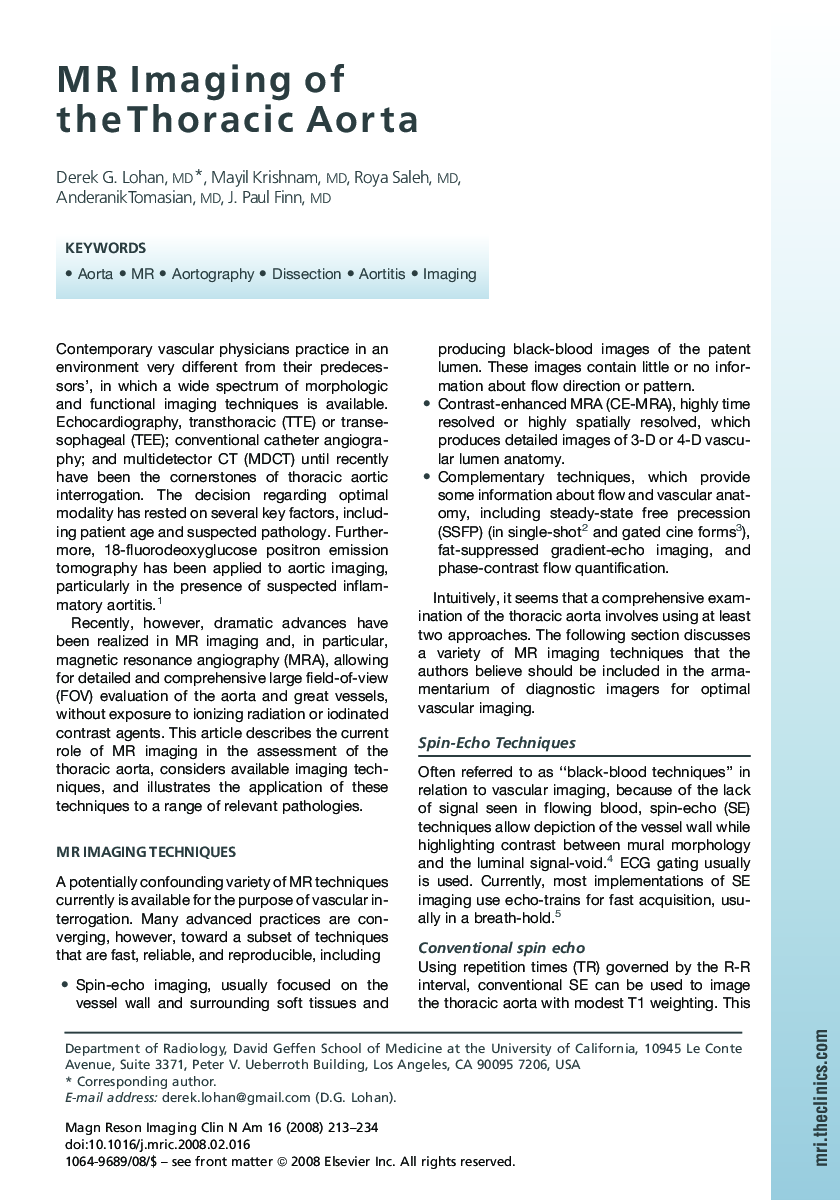| Article ID | Journal | Published Year | Pages | File Type |
|---|---|---|---|---|
| 4243193 | Magnetic Resonance Imaging Clinics of North America | 2008 | 22 Pages |
MR imaging has been incorporated into the diagnostic algorithm for suspected thoracic aortic pathology, challenging CT and invasive catheter angiography as investigations of choice. Techniques, including spin echo, 3-D steady-state free precession, cardiac cine imaging, phase-contrast flow quantification, and high-resolution contrast-enhanced magnetic resonance angiography, are poised to trump other single competitive modalities. The proliferation of 3-tesla systems has advanced the performance of magnetic resonance, aided by parallel imaging techniques, multiarray surface coils, and powerful gradient coils. This article considers the current status of MR imaging in evaluation of the thoracic aorta, with reference to common clinical indications in clinical practice.
